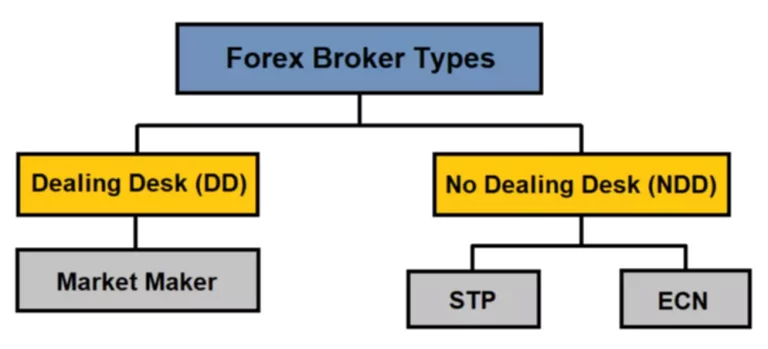NerdWallet, Inc. is an impartial writer and comparison service, not an investment advisor. Its articles, interactive instruments and other content are offered to you for free, as self-help tools and for informational purposes only. NerdWallet doesn’t and cannot guarantee the accuracy or applicability of any info in regard to your individual circumstances. Examples are hypothetical, and we encourage you to hunt personalized recommendation from qualified professionals regarding specific funding points.
Active investing means investing in funds whose portfolio managers select investments primarily based on an independent assessment of their worth—essentially, attempting to choose the most attractive investments. Generally talking, the goal of lively managers is to “beat the market,” or outperform certain standard benchmarks. For example, if you’re an active US fairness investor, your aim may be to achieve higher returns than the S&P 500 or Russell 3000. Passive investing is an investment strategy to maximise returns by minimizing shopping for and promoting. Index investing is one frequent passive investing technique whereby traders purchase a representative benchmark, such because the S&P 500 index, and hold it over a lengthy time. Between passive and lively investing, the most effective investing fashion for you depends on your targets, risk tolerance, time horizon, and expertise.
Advantages Of Lively Investing
That’s extremely cheap for the advantages of an index fund, including diversification, which may enhance your return while decreasing your risk. The buying and selling strategy that may doubtless work better for you relies upon so much on how a lot time you want to commit to investing, and albeit, whether or not you want one of the best odds of success over time. Although there’s a larger probability that you’ll lose your money by making an attempt to outperform the market, the rewards can be astronomical when you succeed.
Using that data, managers purchase and sell belongings to capitalize on short-term value fluctuations and maintain the fund’s asset allocation on observe. Passive investing technique is when an investor buys and holds a mixture of property for an prolonged period. Many passive investors will spend money on passively-managed index funds, which attempt to duplicate the efficiency of a benchmark index. But even standard actively managed funds, which can cost 1% or 1.5% and even 2% annually, are far greater than the investment fees of most passive funds, the place the annual expense ratio might be only a few basis factors. We’re going to explore what investors have to know about lively and passive investing in order to maximise potential returns. We’re additionally going to look past the shiny advertising to see whether lively investing has actually outperformed the passive approach.

It’s probably what you think of if you envision traders on Wall Street, although nowadays you are in a place to do it from the comfort of your smartphone using apps like Robinhood. Anyone remotely familiar with the investment community will know that there is a fixed debate raging over this specific subject. Debate has intensified over the earlier few years.In actuality, the most effective type of investing will rely on your funding targets. In other words, a fund supervisor has so much to do with an fairness fund’s efficiency.
Passive Vs Energetic Investing: What’s The Difference?
One of the most well-liked indexes is the Standard & Poor’s 500, a set of hundreds of America’s prime corporations. Other well-known indexes embody the Dow Jones Industrial Average and the Nasdaq Composite. Hundreds of other indexes exist, and every trade and sub-industry has an index comprised of the stocks in it. An index fund – both as an exchange-traded fund or a mutual fund – can be a quick means to buy the trade.
- The funds we receive for these placements impacts how and the place advertisers’ provides appear on the site.
- However, if an investor does not want the fund manager to take too many decisions, wants the fund to simply map the benchmark, and doesn’t need to take a risk, then passively managed funds could be thought of.
- There appears to be no end to this debate, but there are factors that buyers can contemplate — particularly the difference in cost.
- That’s why it’s a favorite of financial advisors for retirement savings and different investment goals.
- It’s unlikely that an newbie investor, with fewer assets and less time, will do higher.
The case is the same for all different fund categories in the active management class. You could also avoid treating the active vs. passive investing debate as a forced dichotomy and select one of the best funds in either category that suit your targets. Active investing puts more capital towards sure particular person shares and industries, whereas index investing attempts to match the efficiency of an underlying benchmark.
Our companions can’t pay us to ensure favorable critiques of their products or services. He often writes about investing, student loan debt, and general private finance subjects geared toward anybody eager to earn more, get out of debt, and begin building wealth for the future. You can study more about him on the About Page or on his private website RobertFarrington.com.
Passive buyers, relative to active buyers, tend to have a longer-term investing horizon and function underneath the presumption that the inventory market goes up over time. Retirees who care most about income could actively select specific stocks for dividend progress whereas nonetheless sustaining a buy-and-hold mentality. Dividends are cash funds from companies to investors as a reward for proudly owning the inventory. While passive investing is more prevalent among retail investors, active investing has a prominent place out there for several reasons.
The Bankrate Promise
Our estimates are primarily based on previous market performance, and past performance isn’t a assure of future efficiency. Investors who favor preserving wealth over progress may benefit from active Active vs passive investing investing methods, Stivers says. As an investor, a passive or active style may be greatest suited to your wants. Importantly, neither type of investing is outright better than the other.
Having a wealth plan might help you in your method to achieving your targets. The indices selected by Morgan Stanley Wealth Management to measure performance are representative of broad asset classes. Morgan Stanley Wealth Management retains the right to change representative indices at any time.
Because it’s a set-it-and-forget-it method that only aims to match market performance, passive investing doesn’t require every day consideration. Especially the place funds are concerned, this results in fewer transactions and drastically decrease charges. That’s why it’s a favorite of economic advisors for retirement savings https://www.xcritical.in/ and different investment goals. You can buy shares of those funds in any brokerage account, or you’ll be able to have a robo-advisor do it for you. When we are saying portfolio management, we imply how the underlying assets(equity, debt, gold, etc) are being purchased and offered by the fund supervisor.
Beginners are more suited for a passive strategy, such as investing in index funds and low-cost ETFs with a robo-advisor. However, extra experienced investors with a higher threat tolerance may favor the excitement and volatility of frequent trading on the every day market. The major distinction between active and passive investing is that lively investing includes frequent trading in an try and outperform the stock market. Passive investing makes use of a buy-and-hold technique to track the performance of the market. Index funds, similar to low-cost ETFs or passively managed mutual funds, are reasonably priced funding vehicles with lower management charges and reduced buying and selling activity. Moreover, passive funds tend to be cheaper since they do not require practically as a lot upkeep or research as lively funds do.

The relative deserves of ‘active’ versus ‘passive’ investing are hotly-debated. Investors additionally toe the line of not being proactive in how they’re investing their money. You additionally won’t expertise practically as many taxable occasions that may price you down the road. Many or the entire merchandise featured listed here are from our companions who compensate us. This influences which products we write about and where and how the product seems on a page. • Passive strategies are generally much cheaper than energetic methods.
On the opposite hand, if you need to create a personalised investment experience and have the time to commit to this strategy, then active investing may be right for you. Investors with a short-term mindset might additionally profit from an energetic approach. Maintaining a well-diversified portfolio is essential to successful investing, and passive investing through indexing is permits traders to achieve diversification. Index funds unfold danger broadly in holding a representative sample of the securities in their target benchmarks. Index funds observe a target benchmark or index rather than looking for winners.
Do You’ve Got To Put Cash Into Energetic Or Passive Funds?
While ETFs have staked out an area for being low-cost index trackers, many ETFs are actively managed and comply with numerous strategies. Moreover, it isn’t just the returns that matter, however risk-adjusted returns. A risk-adjusted return represents the revenue from an investment whereas contemplating the danger degree taken to realize that return. Controlling the sum of money that goes into certain sectors and even specific corporations when circumstances are changing shortly can actually shield the shopper.
This professional management could be expensive, but thorough comprehension is necessary to know the best time to buy or sell a selected asset. You can technically actively handle funds yourself when you’re geared up with the proper information — this simply may be riskier than hiring knowledgeable. Passive investing (aka passive management) is a low-cost, long-term investing strategy aimed at matching and rising with the market, rather than trying to outperform it.
The first passive index fund was Vanguard’s 500 Index Fund, launched by index fund pioneer John Bogle in 1976.








Recente reacties